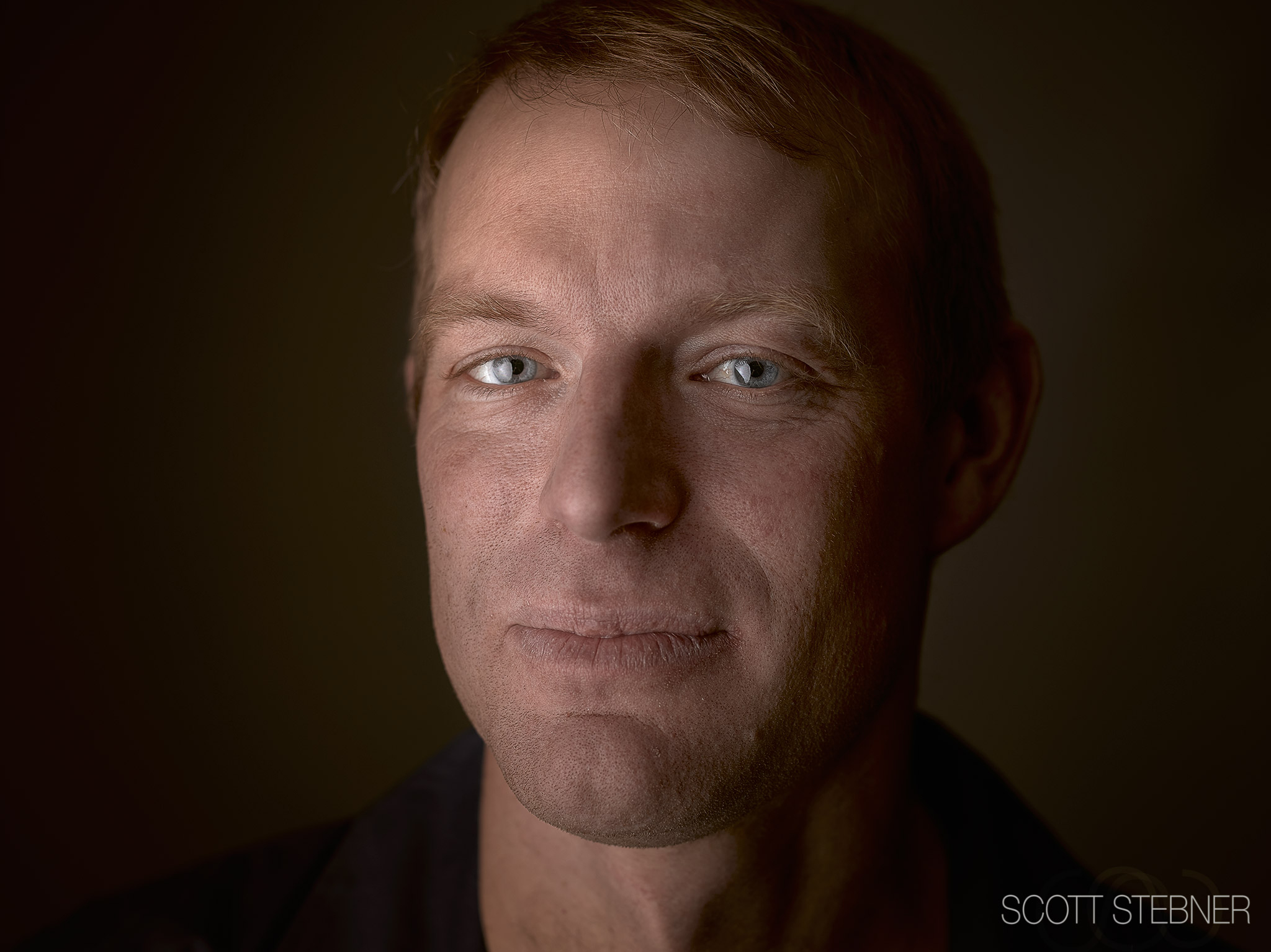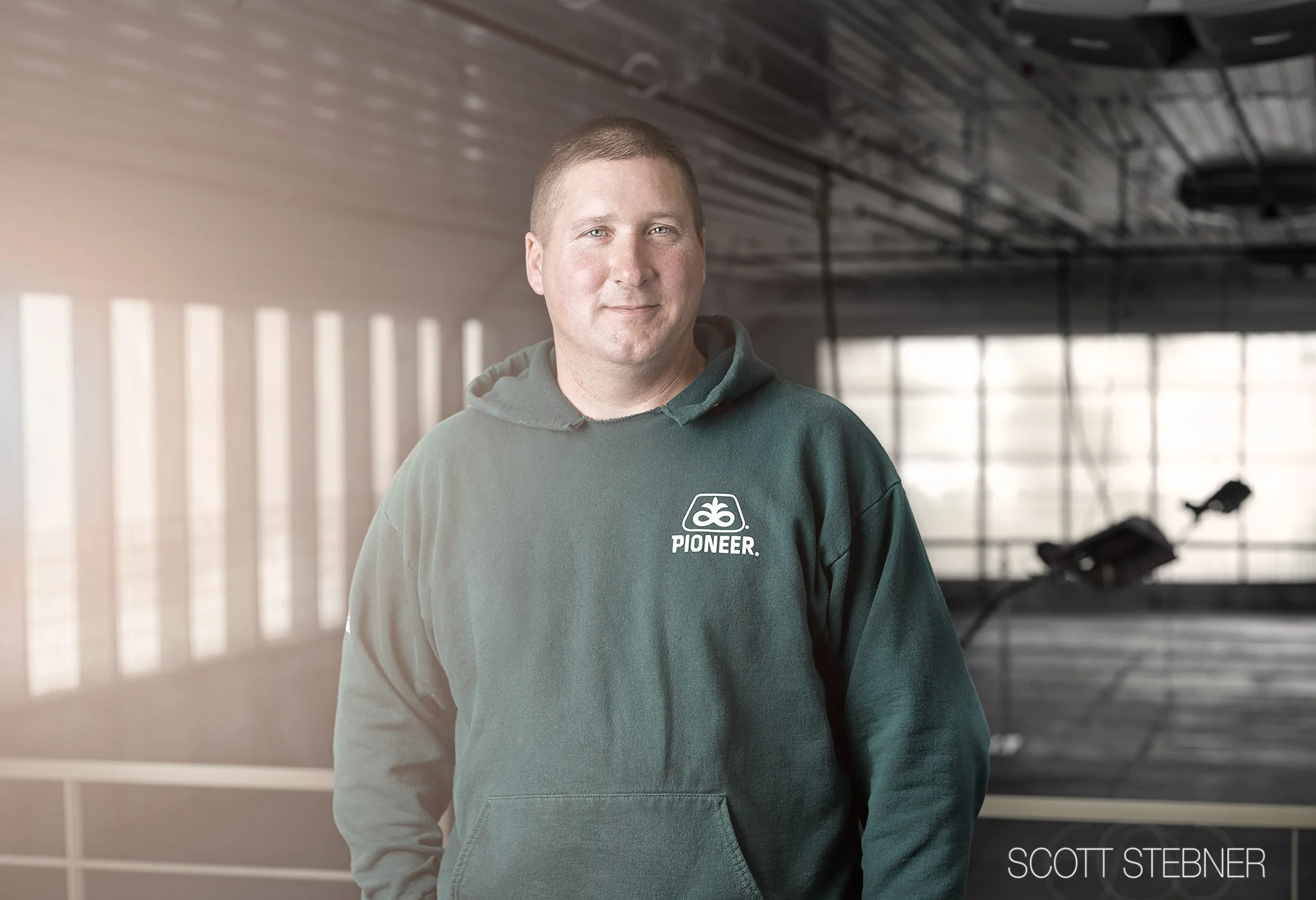As many of you may know, over the last year I have really transitioned the focus of my photography towards creating high-end, cinematically-styled portraits of the hard-working Americans who are responsible for feeding American families. It’s not that I don’t love photographing weddings (we still do, check out stebnerphotography.com), but I just enjoy photographing a subject matter that I have always felt a deep connection to, agriculture.
A few weeks ago I received an invitation to visit a few mid-western hog farms and create some high-end portraits of the farmers and individuals behind the pork community. I jumped at the chance to bring along the new Mamiya 645 digital medium format with Credo 40 digital back and put it through some very real-world situations.
For those of you who follow photography, my camera dealer (Capture Integrations) has offered amazing technical support through my transition into medium format. I highly recommend them to anyone considering a system, but more on that in another post.
Why hogs?
I grew up showing sheep and dairy cattle in San Diego (yes, there is agriculture in Southern California), but my experience was limited to showing a few gilts (female pigs) while I was a member of the Fallbrook FFA chapter. I took courses in swine production as part of my curriculum at Cal Poly, San Luis Obispo and mentored a few students who raised pigs for their FFA projects. *Side note: If you ever want to purchase great meat while supporting a great cause you need to talk to your local FFA chapter.
The pork industry is also an industry that I think gets a very bad name due to the misconceptions the public has about how pork is raised. Since I have a passion for telling the stories of American agriculturists, I gladly accepted the assignment and packed up my gear.
One thing is different when it comes to photographing hogs, especially young pigs. I had to carefully break down every piece of camera equipment and disinfect it with Clorox spray or wipes to guarantee that every piece of equipment was sanitized for the sake of the young pigs. You can imagine with the gear I travel with how time consuming this could be.
Then I took a shower.
Yes, that’s right. In order to enter the facilities I had to go through a showering system to make sure I didn’t bring any possible contaminants with me. Once again, this was to protect the pigs that are young enough to be susceptible to outside disease.
I put on the new boots and coveralls the farm bought me and started touring the facilities. What was the first thing I noticed?
I didn’t smell anything.
Nothing.
I’ve been around pigs long enough to realize they stink. In fact, I used to consider my clothing was disposable when I came around pigs because, to this day, I still cannot figure out how to get the smell out of a pair of jeans. But this farm was different.
As a former agriculture teacher, I could always tell if a student of mine was consistent at keeping a clean pen because if a student slacked on daily cleaning of the pens no matter how clean s/he would have it before my visit the nose would truly tell the truth. This farm was spotless, clean, and sanitary and the lack of smell proved that this was definitely the norm born out of daily habit and a commitment to a sanitary environment. The place was so clean that I often shot images from my chest or sitting down on the ground.
Being able to sit down and interact (without getting dirty) was not something I expected at a large commercial operation. Here Jesus spends some time monitoring the hogs in a pen.
The next thing I noticed?
The people…definitely the people.
"Farmer" is his name, and he is in charge of managing the family-owned operation. In addition to putting up with me and my camera, he also is a kind soul full of wonderful conversation.
I met a great group of people at the two farms I visited and they had a passion for the caretaking responsibility they were given. They also knew just about everything you could know about each one of the barns and took very careful notes and records of every aspect of the facility from birth percentages, health monitoring, and even the climate control systems used to keep the barns warm in the winter (it was 75 degrees) or cool in the summer.
Jon had enough patience to put up with me for two days of photography. It was to my benefit, since I found Jon is not only a wonderful character that loves to laugh and joke, but is also a very compassionate farmer who is a dedicated caretaker for the hogs he is in charge of.
Jody, a veterinarian, takes some time out of her day to stand in front of my camera.
Jody is one of the full-time veterinarians in charge of monitoring herd health.
Bob is checking on the health of his new piglets by walking through the pens.
Jose is a dedicated and hard worker and a gracious soul that put up with me for a day.
One of the full time veterinarians at the farm. I intentionally underexposed the background to focus on the subject matter.
Alex is one of the farm hands in charge of constantly monitoring the health of the hogs. He's a wonderful spirit and though we did have the barrier of language it was easily bridged through the universal language of laughter.
The last thing I noticed?
The pigs.
This was the first commercial operation that I’ve visited and although I’ve taught about the hog industry for a while personal experience was lacking. I didn’t know what to expect in terms of pens or how the pigs were handled.
I don’t want to say I was surprised by what I noticed, but I was glad that my hopes and expectations were confirmed in that the pigs had ample space to move about and interact with each other. They were very well taken care of. They were clean. Their watering systems were all working properly, and not a single hog was without access to clean water and ample clean feed whenever they wanted it.
The two full-time veterinarians at the farm monitored the health of the pigs and even monitored their rations. They did an excellent job communicating those changes to the managers and farm hands, and the whole communication process seemed seamless.
This is a hog feeder that supplies a steady supply of feed. This hog has decided eating from the outside just wasn't to his fancy. What was his decision? To climb right on up and have a go. The feeders are regularly checked and cleaned.
The farmers did a great job putting up with me as I snapped countless photos of them…and for that I am ever grateful
Scott Stebner is an award-winning agricultural photographer specializing in creating powerful portraits of farmers and ranchers. To see more of Scott's work, visit www.scottstebner.com















